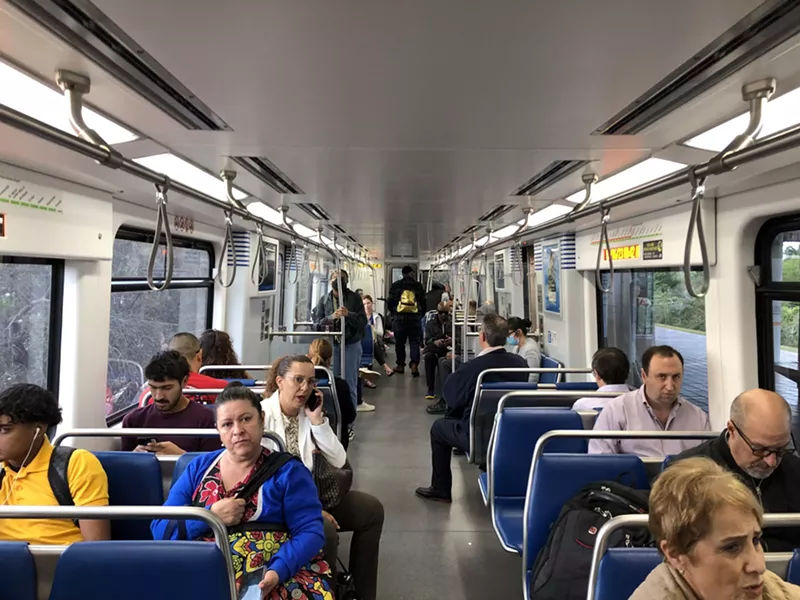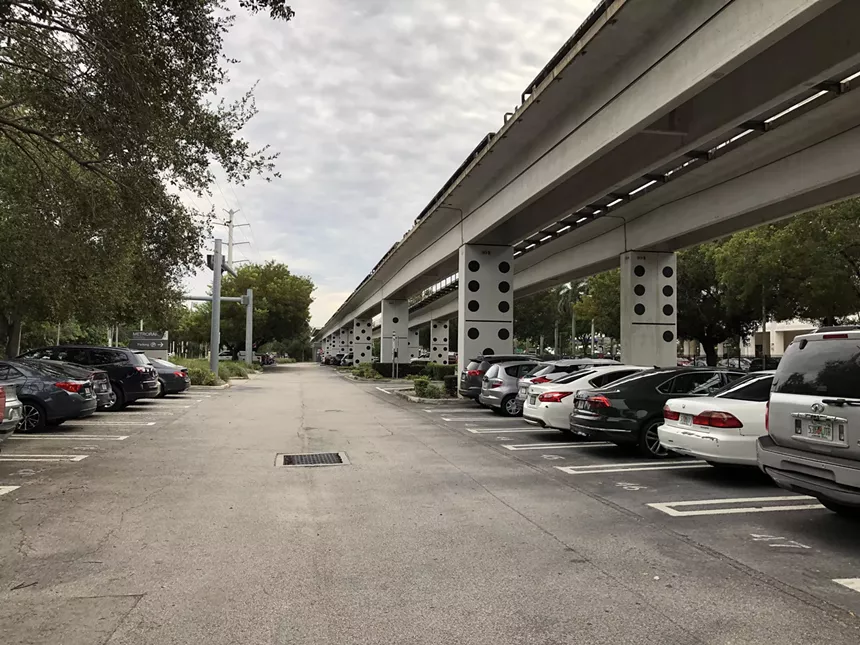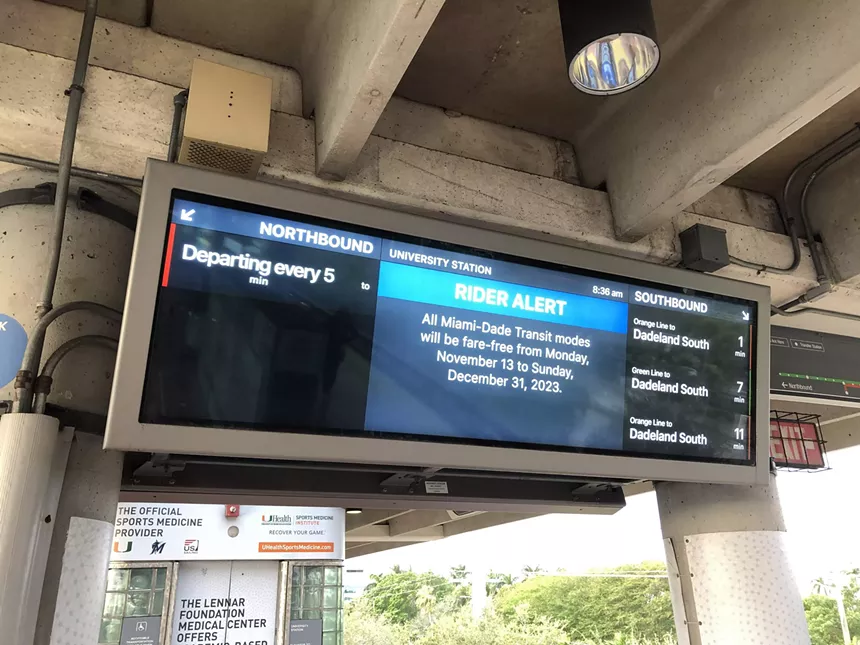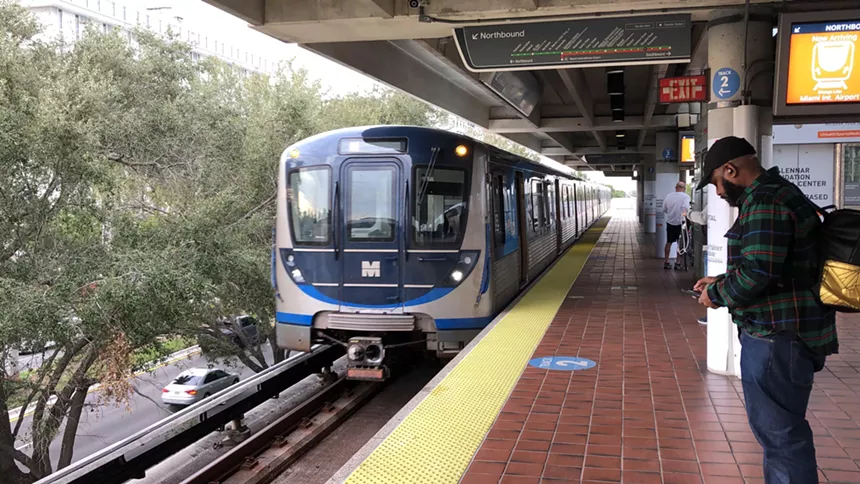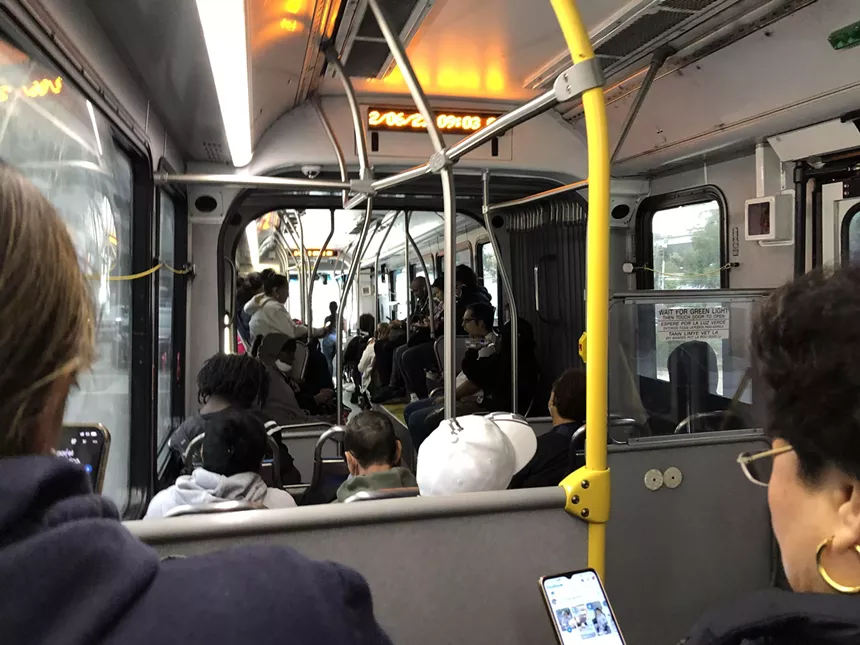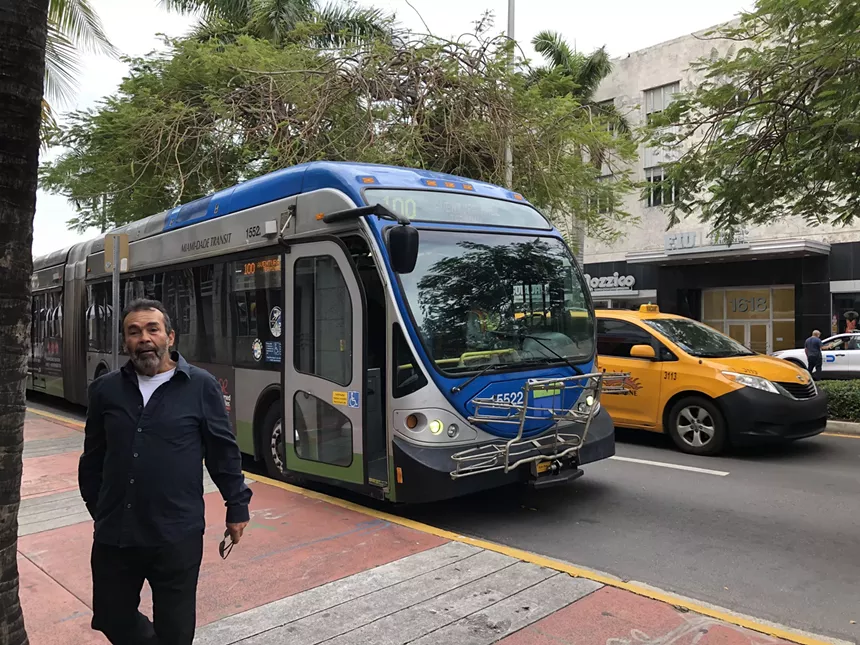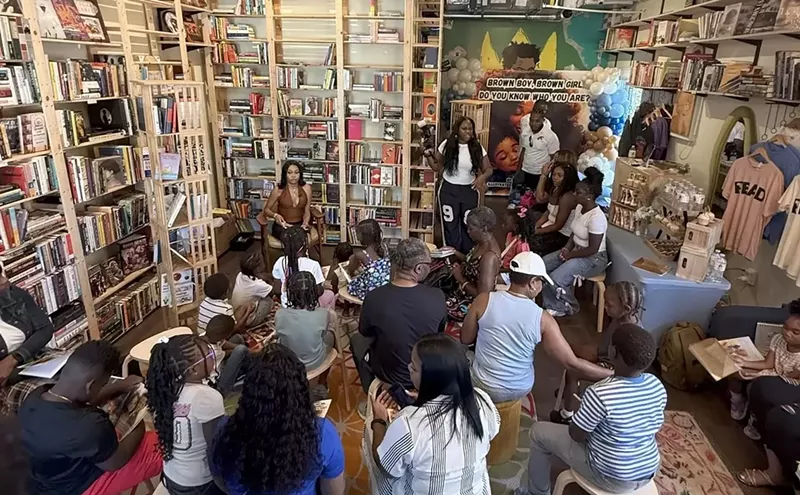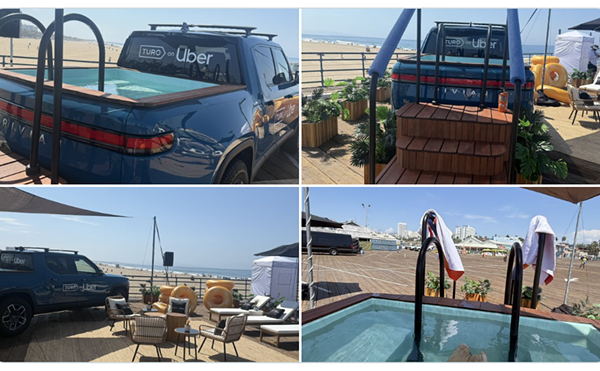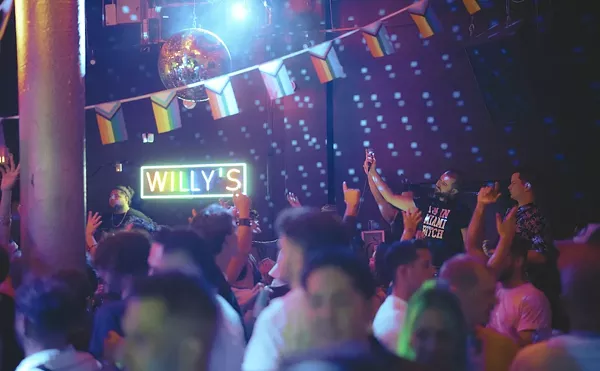Yesterday, I went to Miami Beach to preview Untitled, Design Miami/, and Satellite. The trip to the beach was simple: I got a Lyft from NADA in downtown Miami, which took no more than half an hour.
The journey back, however, was painful. It took an hour to hail a ride on the app because drivers were frozen in traffic. When I finally got one, it was the middle of rush hour. My driver Roberto and I spent the next 50 minutes in standstill traffic on the Venetian Causeway before I finally reached my car parked at the Pérez Art Museum Miami. I probably would have gotten there faster on foot.
Why do we do this? Year after year during Basel, people lose hours of their lives being forced to rely on Earth's least efficient mode of transportation to get to and from Miami Beach. The streets and causeways are clogged with cars, all moving at a snail's pace thanks to any credible alternative form of transit.
But what if there was a better way? What if the credible alternative was right under our noses all this time?
I'm talking, of course, about the bus — and in Miami-Dade, the bus has supposedly gotten a lot better. On November 13, the county implemented its Better Bus Network plan, designed to increase frequency, streamline service, and increase access to the MetroBus network across the county. The change hasn't been without controversy — some riders lamented the loss of certain stops and routes — but in a city as car-dependent as Miami, any potentially positive change should be welcome.
I've never taken public transit in Miami-Dade myself. As a South Florida native, I've always seen it as an article of faith that car ownership, or at least an Uber or Lyft account, was necessary to get around in Miami. But after suffering through yet another apocalyptic Basel traffic jam, I'm ready to give transit a try, especially since the entire system is fare-free until December 31. Here's what happened when I took the bus to Art Basel.
8:20 a.m.
In typical Miami fashion, I am late. I initially planned to set out from the house I'm staying at in South Miami closer to 8 a.m., but for various reasons, I am now leaving 20 minutes past the hour.My plan is to drive to the University Metrorail station, take the train to Government Center, and then hop on the bus all the way to the convention center. Let's see how it goes.
8:32 a.m.
It takes ten minutes to drive to the Metrorail station and park my car. I'm not crazy about having to drive to the train station. Ideally, public transit should be reachable on foot or by bike from anywhere in the city, and hopefully, the city will begin to move in this direction.When I open the PayByPhone app, I find out the county is waiving parking fees for the rest of the year along with the free fares. A nice surprise.
8:35 a.m.
I walk into the station just as a train is leaving. Not a problem — there's another one coming in five minutes. Even New York City's massive MTA struggles with keeping the trains frequent and on time, so you have to give the city credit for that.The weather, by the way, is gorgeous — a chilly 60 degrees. It makes the open-air platform all the more enjoyable.
As the train pulls into the station at 8:42, out of curiosity, I check Google Maps to see how long this trip will take by car — 45 minutes. Let's see how transit competes.
8:42 a.m.
When I get on, I find the train car filled with people — not packed, but most of the seats are taken. Who says no one in Miami takes transit? In fact, according to the county Department of Transportation's most recent State of the System report, 245,700 average weekday riders use Miami-Dade Transit. It'll be interesting to see how that number changes during and after the free period.I look out the window at the traffic on U.S. 1, which I would have been stuck in. The train zooms past. Instead of worrying about the cars around me, I can sit in my train seat, relax, read a book, or check my phone. It's great.
8:49 a.m.
The train reaches Vizcaya station. All sorts of people are riding the train. UM faculty, businesspeople, and older women are conversing in Spanglish in the nearby seats. Everyone is pretty quiet and polite, which is nice. A cyclist has brought his bicycle aboard, and another passenger leans against a scooter. I imagine myself getting on the train with a bike, getting off in another neighborhood, and cycling to my final destination instead of walking.8:53 a.m.
Lots of people get off at Brickell. The train is half empty now. I look out the window and realize how high up the platform is.8:56 a.m.
I reach Government Center, where I get off. Now, the hard part begins.9:01 a.m.
After following wayfinding signs to the bus station, I find a huge scrum of people waiting for the next bus, and two are lined up at the stop. I board the 100 bound for Aventura.Nearly every seat is taken. Again, people of all ages and races are on board. A gentleman in a hooded jacket and surgical mask talks to a woman across his seat. An elderly gentleman speaks with a woman in a striped shirt. People watch TikToks on their phones. The roar of the engine drowns out conversation.
9:06 a.m.
More people flood on board after the first stop. It's standing room only now.The bus is currently running in a dedicated lane through downtown, but it has to stop at traffic lights, which isn't ideal. Still, it's nice not to have to pay attention to the road.
9:20 a.m.
The bus finally gets on the MacArthur Causeway. It's been an hour since I left home and 40 minutes since I got on the train. We pass the Pérez Art Museum Miami and the cruise terminals on Dodge Island as the bus crosses over the bay.9:25 a.m.
Just past the bridge to Palm and Hibiscus Islands, traffic slows to a crawl. This is where a dedicated bus lane would come in handy.9:27 a.m.
Someone requests a stop at Star Island. I spot another 100 bus two or three cars ahead, which suggests that traffic is causing the buses to be backed up.9:29 a.m.
Another stop was requested at Fisher Island Ferry Terminal. No one gets off. It seems like certain people don't know their stop. Maybe they're new riders like me?9:32 a.m.
The bus finally reaches Fifth Street and Alton Road in Miami Beach. Lots of people begin to queue in the aisle to disembark. The fluorescent lights go on every time the doors open and turn off when they shut.9:43 a.m.
It's been almost an hour since I got on the train, but I'm almost at my destination. People in front of me are straining to see the street signs for their stop.9:46 a.m.
Just ahead of Lincoln Road, I decided to get off the bus and walk the last few blocks to the convention center. My journey is complete.The Journey Home
I enjoyed my ride so much that I decided to take the bus back from Miami Beach. At 2 p.m. I left the convention center and walked south to a bus stop on 17th Street. I jumped on the next to arrive, then got off at Omni, took the MetroMover to Government Center, and then the Metrorail back to University Center, which took almost an hour altogether.That's probably the biggest issue facing the city's public transit system: It's the wrong move if you're in a rush. It took about an hour to get from University Station to my bus stop on Washington Avenue. I may have left my house later than I had wanted, but I had all the time in the world to get to Basel. Not everyone has that luxury. Miami may be a very lenient place when it comes to being on time, but people still have to get to work. Still, more people taking public transit means less driving and getting stuck in traffic. Increasing frequency and prioritizing public transit by building things like dedicated bus lanes is key to bringing this to fruition. The Better Bus Network is a step in the right direction, but it'll take more steps to give Miami the world-class transit system it deserves.
That being said, I loved riding the bus. I didn't have to pay attention to the road, and I enjoyed being around other people instead of being in a hermetically sealed automotive box. If I weren't busy taking notes, I could have read a book or listened to a podcast or music. And I did get where I wanted to go in a reasonable, if not exactly prompt, amount of time. It may not be the fastest way to get around, but it's much less stressful than driving. For that reason alone, I would ride again in a heartbeat and encourage everyone reading to do the same. Just remember to thank the bus driver when you get off.

